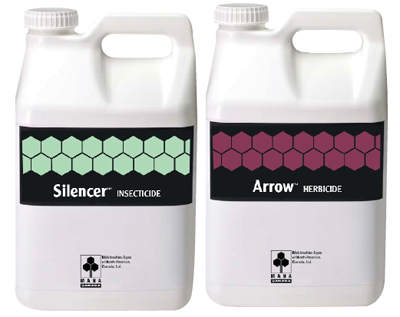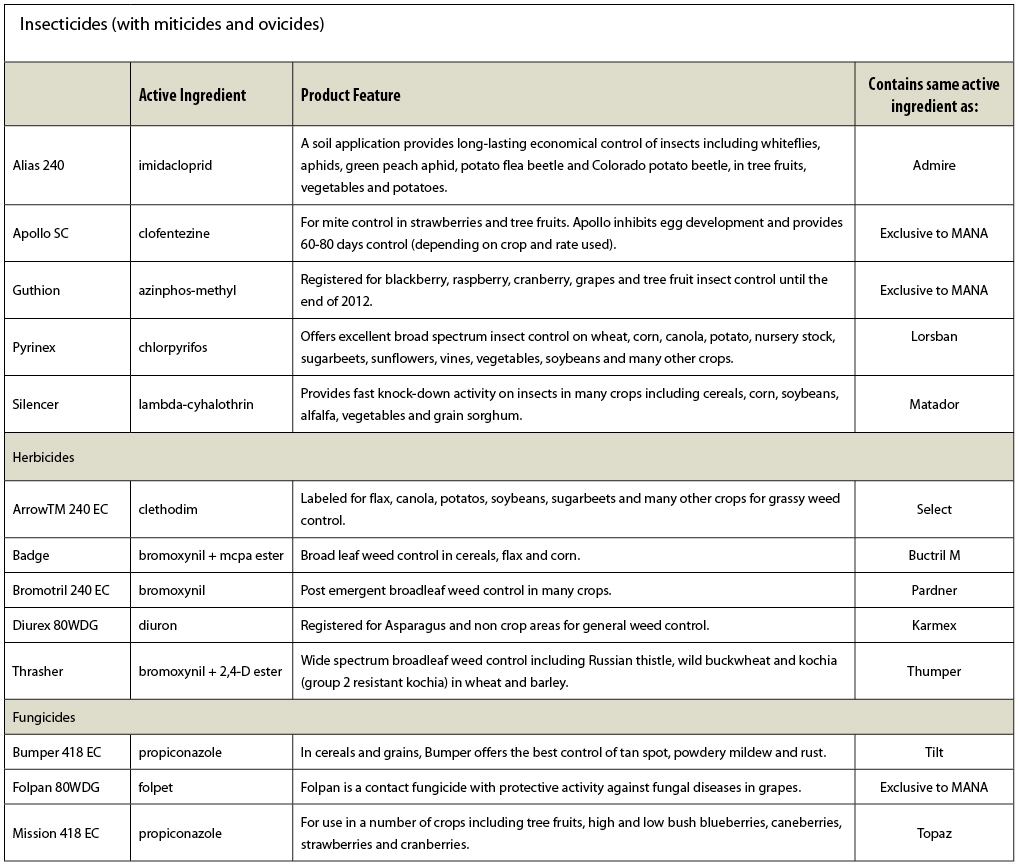
Features
Agronomy
Identity Preserved
MANA enters Canadian market with 14 pesticides
Growers can now look for a new look to old insecticide, herbicide and fungicide products.
May 4, 2009 By Bruce Barker
Off-patent products have equivalent active ingredients as original pesticides.
Growers can now look for a new look to old insecticide, herbicide and fungicide products. Makhteshim Agan of North America, Canada, Ltd. (MANA) has registered 14 off-patent products in Canada, and has several more waiting in the wings. Their products will offer an alternative to old standbys like Lorsban, Buctril M, and Tilt. “For growers, we will be offering an additional choice that will provide them with a competitive price. It might not always be the best price, but the products will be unbundled, so growers don’t have to purchase multiple products from one company and then wait for eight months for a rebate cheque,” explains Dale Kushner, commercial business manager for Canada, with MANA Canada in Calgary, Alberta. “They will also be able to pick the product with the best agronomic fit, without worrying about bundles.”
 |
|
| MANA is bringing additional choices to the Canadian pesticide marketplace. |
MANA Canada is an Israel-based company with headquarters in Calgary, Alberta. MANA is ranked seventh in global crop protection sales in 2007, behind Bayer CropScience, Syngenta, BASF, Dow AgroSciences, Monsanto and DuPont. Kushner points out that while MANA may be new to Canadians, it is a long-established company and has a well-known reputation as the fourth largest chemical manufacturer in Europe. “We have been doing registration work in Canada for the last seven years. Starting in 2007, we had enough products registered that we felt it was time to start marketing our products as a brand,” explains Kushner. He points out that United Agri-Products (UAP), which remains the exclusive distributor for MANA products, previously marketed several products.
Registration process requires major investment.
While registering an off-patent pesticide does not take the same investment as a new product, the process is rigorous nonetheless. The products must be reviewed and registered by the Pest Management Regulatory Agency (PMRA) in Canada, a branch of Health Canada. The PMRA is currently switching over to a new process called Proprietary Product Information Protection (PPIP). Previously, Kushner says that registration of an off-patent product took two to three years. Under the new system, the hope is that new registrations will take 12 to 14 months, after the initial field trial work is completed.
To bring an off-patent product to market, MANA Canada, like all companies, must first prove that the active ingredient in their product is chemically equivalent to the patented product. Two years of efficacy data must also be submitted and the product must show equal or better performance as the existing product. A label must also be approved.
Finally, the applicant may have to compensate the original registrant for the basic data package, as determined by the PMRA. The total cost can easily exceed the million dollar mark. As a result, companies bringing off-patent products to market need to be serious players in the chemical industry.
Kushner says that MANA Canada is working on several more generic products, which may be registered in time for the 2009 application season.
MANA Canada joins several other generic manufacturers operating in Canada, including NuFarm Agriculture, Gowan Canada and Cheminova.
 |